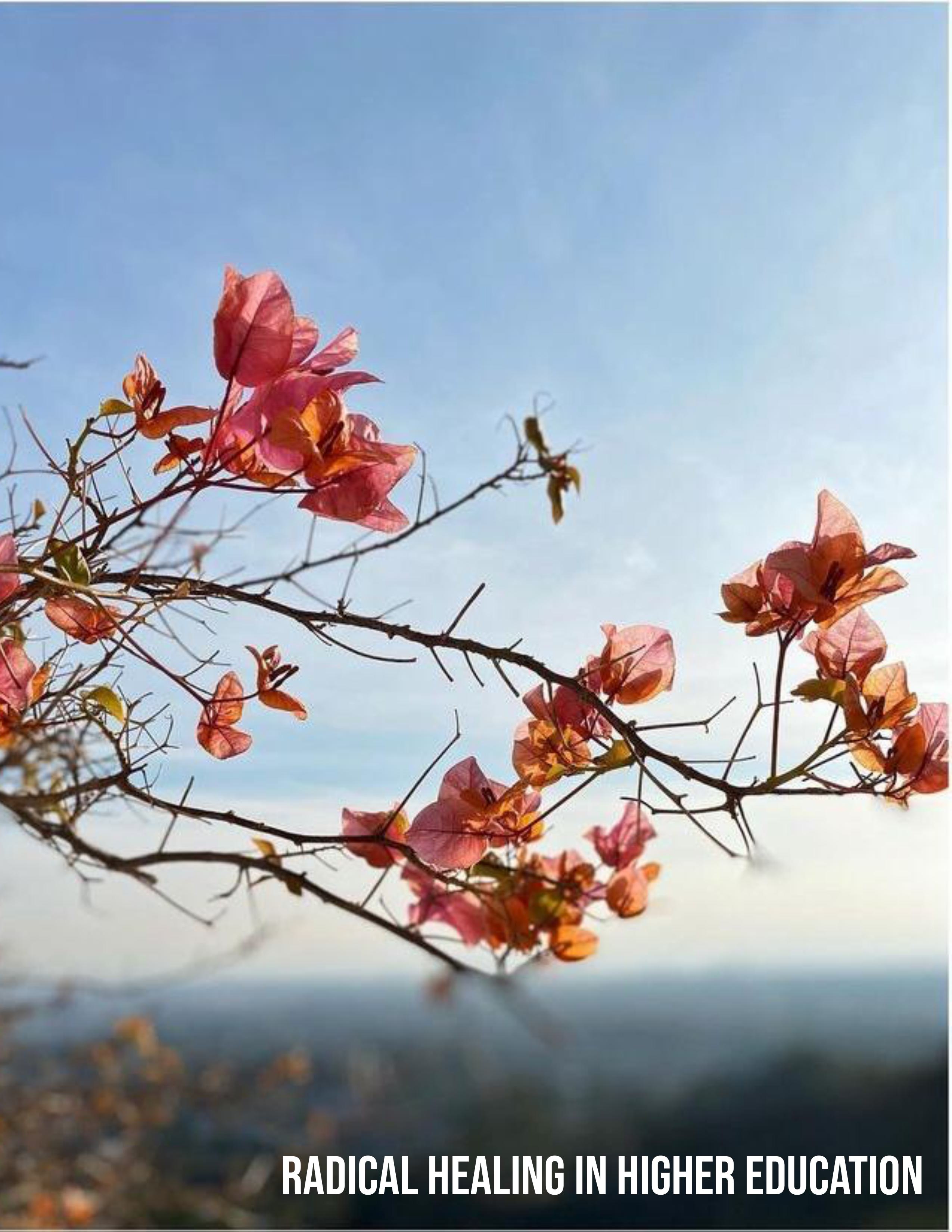Radical Hope for Radical Healing
DOI:
https://doi.org/10.70085/jtse.v3.i3.308Keywords:
radical healing, art-based knowledge, radical hopeAbstract
I took this photo in January 2022. At the time, I was a third-year doctoral student. My doctoral program, which was designed to have two-week, in-person residencies twice a year, had been fully remote/online since 2020. It was my first time back in southern California for residency since the COVID-19 lockdowns. I was anxious about traveling again, worried about everyone’s wellbeing, and worn out from the intertwined challenges of navigating a full-time doctoral program and a full-time job in higher education amid the unfolding pandemic.
During the first week back on-campus for January residency, I felt like a clenched fist. During the weekend break between weeks one and two, a few cohort-members and I visited the Getty Museum for a study break. As I took this photo from a viewpoint overlooking the landscape, I felt a cool breeze on my face and realized that for the first time in a long time I felt a sense of peaceful relief — an unclenching. Standing at the Getty, one could not tell that wildfires had burned through this area just a few years before. Our natural relations (e.g., animals, plants, land, water, air) inspire me: Even after a devastating fire, they (re)grow. For me, they embody radical hope for radical healing.
Now, as I reflect on the day I took this photo, wildfires are burning again in southern California. I find myself again worried about the wellbeing of people and our natural relations there as the fires rage on. The Getty Museum has been lauded during this current/ongoing fire for its fire-resistant design, protecting its valuable collections. Meanwhile, I am thinking about what is lost in these fires that isn’t prioritized like the Getty’s museum artifacts—lives, homes, ecologies, and more.
These days, higher education in the US in many ways feels to me like it’s “on fire,” metaphorically (and not in a good way). Zero-sum, dominant logics tell us we must choose — we can’t save, protect, and/or heal everything. Whereas, abundant logics argue our flourishing is mutual, interdependent, and reciprocal (Kimmerer, 2024). To me, this photo represents both a promise and a challenge: How can we co-create hope and healing for liberated futures for education and beyond? Paraphrasing Arthur Ashe (a groundbreaking African American tennis player famously quoted as saying “Start where you are. Use what you have. Do what you can.”), I believe it starts right where we are, with what we have, doing what we can, in this moment and the next one.
Reference: Kimmerer, R. W. (2024). The serviceberry: Abundance and reciprocity in the natural world. Scribner.
Downloads
Additional Files
Published
How to Cite
Issue
Section
License
Copyright (c) 2024 Journal of Trauma Studies in Education

This work is licensed under a Creative Commons Attribution-NonCommercial-NoDerivatives 4.0 International License.
Upon publication articles are immediately and freely available to anyone, anywhere, at any time. All published articles are licensed under a Creative Commons Attribution-NonCommercial-NoDerivs 4.0 Unported License. All articles are permanently available online. The final version of articles may be posted to an institutional repository or to the author's own website as long as the article includes a link back to the original article posted on JTSE.


